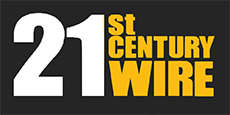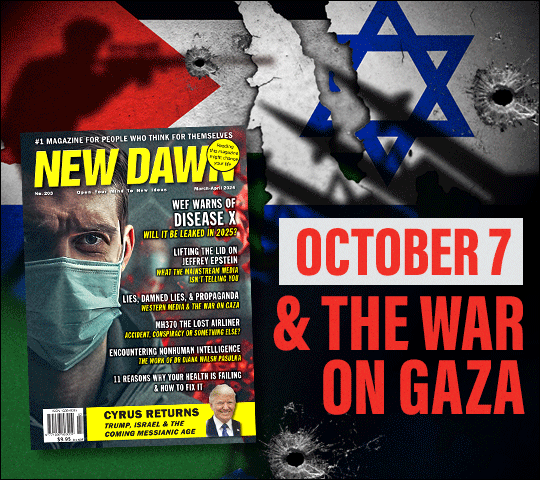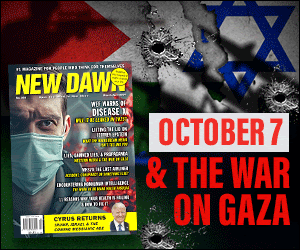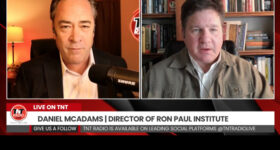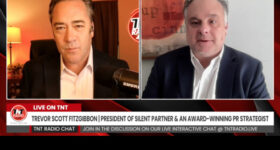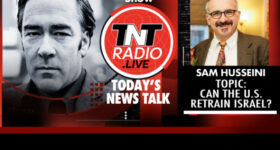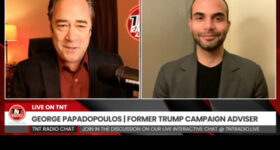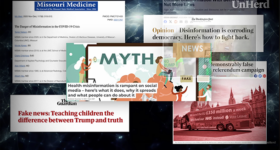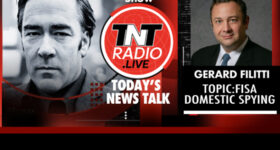Andrew McKillop
21st Century Wire
In the wake of the Strauss-Kahn affair, real economic events are fast conspiring to reshape the global financial playing field. What the big player governments on the IMF Executive Board want- and want fast, is action to stave off international financial meltdown. They also need continuing multi-billion dollar action to prevent a return to near-bankruptcy for their big name high-street banks.
Following pre-trial hearings, Dominique Strauss-Kahn was bundled out of the IMF and into a heavily guarded residence surveyed by cameras in every room. For plot theory lovers, these cameras can be contrasted with the alleged claimed cameras in the corridor of the Manhattan Sofitel hotel, able to capture and record images of the panicked and distressed 32-year-old Guniean hotel room cleaner fleeing from the room where Strauss-Kahn had sexually assaulted her, before himself fleeing under the same cameras.

TIME TO FACE THE MUSIC: In the wake of the DSK Affair, the IMF are facing some big strategic decisions.
By 19 May, these hotel cameras simply did not exist, and in the corridor of the room in question had never existed. But never mind! Plenty of other evidence was under preparation or already in the possession of prosecutors and their investigators. Much more serious and real charges had existed against Strauss-Kahn, whose $75,000-a-year entertainment and personal expenses allowance at the IMF rather comfortably covers any paid sex he might have wanted.
Strauss-Kahn’s nice talk for pseudo-socialists about greater accountability and more controls on the global finance industry most surely sounded a little too much like Elliot Spitzer talking, circa 2007, about how he was going to clean up Wall Street. By early 2008 Spitzer fell in a sex scandal where the bit players were staffed from the same high price prostitution rackets Spitzer had been investigating as New York Attorney General. More important, Strauss-Kahn was likely failing in the real key mission of the IMF, but his sudden disappearance creates huge risks of the game plan becoming known.
SUPPRESS GOLD AND SAVE THE SYSTEM
The IMF and its close-related international financial partner institution, the Bank for International Settlements (BIS) operate with the sort of ironclad secrecy only dreamed of by the bankrupted, downsized and repackaged (that is restructured) Wall Street financial players which Spitzer brushed too hard against.
IMF financial support and bailout operations in 2010 reached about $ 91 billion, compared with about $ 1 billion in 2006. Proposals agreed by the G20 and by the IMF Executive Board since April 2009 target an increase of its total resources by as much as $ 750 billion within one or two years.
No DSK = no EURO? Speculation persists in the wake of DSK’s resignation:
.
Doing this is the key challenge for the IMF and whatever director it has. Vastly increasing the IMF’s firefighting role in bailing out governments unable to borrow on global capital markets, like Greece at present, and re-financing weakened private banks by financing national governments which in turn bail out banks in their national territories, is however and in no way sure and certain. The Strauss-Kahn crisis can or might be the opening salvo in an IMF crisis for reasons which are not so complex.
The processes or mechanisms the IMF can draw on to vastly expand its bailouts and financing are few and easy to define. They all feature SDRs on one hand, and gold sales and swaps, on the other. Both are full of risks for the global financial system and economy at this highly weakened moment.
The IMF can encourage national central banks to sell their gold nearly always in secret, or the IMF can print and swap SDRs (Special Drawing Rights) against gold from the central bank of a country needing emergency help and then secretly sell this gold, often through the BIS. Other financial magic operated by the IMF, with or without the BIS extends into realms as surprising, to some, as real estate and international trade financing on a strictly-for-profit basis. Even less publicized, and just as profitably it likely operates in tandem with the ultra-secret BIS- for recycling hot capital from low income countries and tax haven island states, in a constant IMF self-financing process.
Despite all this, the bottom line since the global financial crisis went critical in December 2008 is these activities are vastly smaller than the size of the problem: national debt financing and saving bankrupt private banks.
SDRs are the special trump card of the IMF because this institution with a highly special and only partly defined role relative to both governments and the global financial system has one rare privilege it shares with governments: printing money, that is SDRs. Inside its 24-member Executive Board the trading of these SDRs is permanent – and usually secret.
The plan to establish these “special drawing rights”, the SDRs, was devised on September 29, 1967 by the Governors of the IMF, only a few weeks before the collapse of the London gold pool. At the time it was clear to many observers the intention was to put SDR’s into play in time to overlap the pool’s closure, for the constant key mission of the IMF: protect the value of world currencies, starting with the dollar by preventing gold prices growing further, if they are rising, and pushing them further down, if they are falling.
PREVENTING MELTDOWN]
This dawn of SDRs may be little known to most, but for bullion traders and central bankers is a key period and a sombre flashback – in miniature – to the gold and money crises of today. By 1965 the London gold pool was consistently supplying more gold to cap prices than it was able to buy back. The end for the pool started with the devaluation of the UK pound sterling in November 1967, yet again spurring gold purchases. By early December, the gold pool was selling around 20 times its usual amount of gold, and with its Zurich partners was forced to cease forward sales of gold, further intensifying gold demand. Over a few weeks, the pool had laid out more than 1000 tons, and the newly invented SDRs had done little or nothing to stem the panic.
This 1000-ton figure, we can note is close to 40 percent of world total gold mine output in 2010.
In those days, 1000 tons of gold was worth around $1 billion. Today it would fetch about $ 50 billion underlining the general failure of the IMF’s key mission to “protect currencies”, of course spurring ever more desperate attempts to finally succeed. Since the action engaged by the IMF to raise its financing capabilities and maintain confidence in world moneys is always secret the stage of negotiations reached by Strauss-Kahn before his rapid fall is hard to know. To be sure, the subject attracts almost as much comment as what happened at the Manhattan Sofitel hotel, last weekend, but global markets do not have the time to dwell too long on juicy sex scandals.
In recent weeks, heroic behind-the-scenes action has been poured into talking down gold, oil and other commodity prices, and talking up the failing dollar.
The blatantly overvalued euro continues to be defended by the European members of the IMF Executive Board, showing rare and total solidarity in their quest to ensure a European takes over from Strauss-Kahn. This could or might however be a lost cause for the de facto US-European bloc, still holding a massive majority of votes inside the IMF, and the power to decide how many SDRs are printed and what central bank gold reserves will be sold or swapped – but kept on the books as still belonging to national central banks.
Current events could now radically speed decisions.
The BRICS (Brazil, Russia, India, China, South Africa) group, showing a lack of solidarity in jostling to get leadership of the IMF as open as Europe’s solidarity and American neutrality playacting, have very different agenda items in this global quest to prevent an epic financial meltdown. Running trade surpluses, they can finance their national budget deficits and borrow to save their fragile banking systems, as overstretched as those of the USA, Europe and Japan.
The bottom line is that the IMF, as a gold laundering entity using central bank gold may be close to its first double-or-quits crisis point in its 67 year history, and its 44 years of SDR printing.
THE SCENARIOS
It is possible Strauss-Kahn was close to some major breakthrough in recycling government gold, printing SDRs and protecting the paper moneys printed by governments, but whatever his heroic quest, and why he fell, the numbers are stacked against this quest. Taking the approximate current market value of all the gold that has ever been produced, few estimates place this at above $ 5000 billion. US Federal debt growth from December 2008 to April 2011 was about $ 3600 billion. Global “hot capital” flows, grotesquely underestimated by the IMF in its publication, are likely running at no more than $ 250 billion-a-year.
The only solution for Strauss-Kahn, and whoever succeeds him is to invent a new global money. This was the real mission of “DSK” and will be the real mission of whoever steps into his shoes, and does not stay in Sofitel mid-range hotels with low level security on room intruders. The action to produce a new global money – called a reserve currency – will also have to be very fast, due to the debt clock, or time bomb ruthlessly ticking forward.
For a short while the gold bullion market will stay quiet, but daily change of the gold price will increase, and then rise further. Few rational analyses of the right price for gold place it under $ 2000 per troy ounce, and plenty of experts will say this is only the starting gate for a hyper inflation spiral in which national currencies are ground to dust like a black hole swallows and smashes stars. All and any real asset, that is food, energy and minerals can only spiral in price for as long as the global economy struggles forward. After that, the recession implosion will operate, restoring the value of money in a vastly downsized global economy morphing into semi-autonomous national or regional economies.
Preventive action by the world’s few capital surplus countries could start in the very near-term future. The BRICS group could break away from the IMF system by inventing its own BRICS reserve money backed by key commodities, gold, and manufacturing power, but this would need a vast increase of their current low-level coordination of financial and monetary policies.
Not impossibly, the USA facing hyper debt could take its own unilateral action, with well-described and possibly planned actions to erect tariff barriers and heavily limit overseas holdings and use of the US dollar – that is siege economy action in a new era of isolationism marked in the geopolitical domain by abandoning the Afghan war, total disengagement from Iraq and leaving Israel to solve its long and festering problems with the Palestinians all on its own.
In the same way, Europe’s neo-colonial turf war with China and India for control over Africa’s natural resources and growing consumer markets could morph into a war for saving European moneys.
Under any scenario the Strauss-Kahn affair comes at a key moment. Attempts at saving the global economy and world moneys, since the end of 2008, have all failed, raising the stakes and risk each time. What we may now witness is historic change as the IMF’s real situation seeps and leaks out, under the tinsel wraps of just another sex scandal.
READ MORE IMF NEWS AT: 21st Century Wire IMF Files
